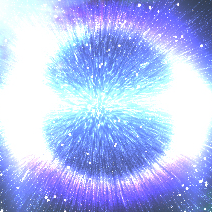NASA’s Hubble space telescope captured an unusual object, Hanny’s object, discovered in 2008. It is a blurry mass of gas floating next to the galaxy called IC 2947.
A collision between two galaxies
« Hanny’s Voorwerp » (Hanny’s Object in Dutch) is the size of our Milky Way galaxy. It is the only visible part of a 300,000-light-year-long streamer of gas stretching around the galaxy IC 2947, located approximately 650 million light-years from Earth.
A collision between this galaxy and another one about a billion years ago may have created Hanny’s Voorwerp and fueled the quasar illuminating it.
If the object discovered by Hanny Van arkel in 2008 is visible, it is because of a searchlight beam of light from the galaxy’s core. This beam of light is emitted by a quasar, a bright energetic object powered by a black hole.

A star-forming region
This Hubble view uncovers a pocket of star clusters, the yellowish-orange area at the tip of the object. The star clusters are confined in a few thousand light-years wide area, where the youngest stars are two million years old.
The gas coming from IC 2947, compressing Hanny’s object, may have instigated the star birth. What appears to be a hole may be a shadow cast by an object in the quasar’s light path.
The image was made by combining data from the Advanced Camera for Surveys (ACS) and the Wide Field Camera 3 (WFC3). The ACS exposures were taken April 12, 2010; the WFC3 data, April 4, 2010.
